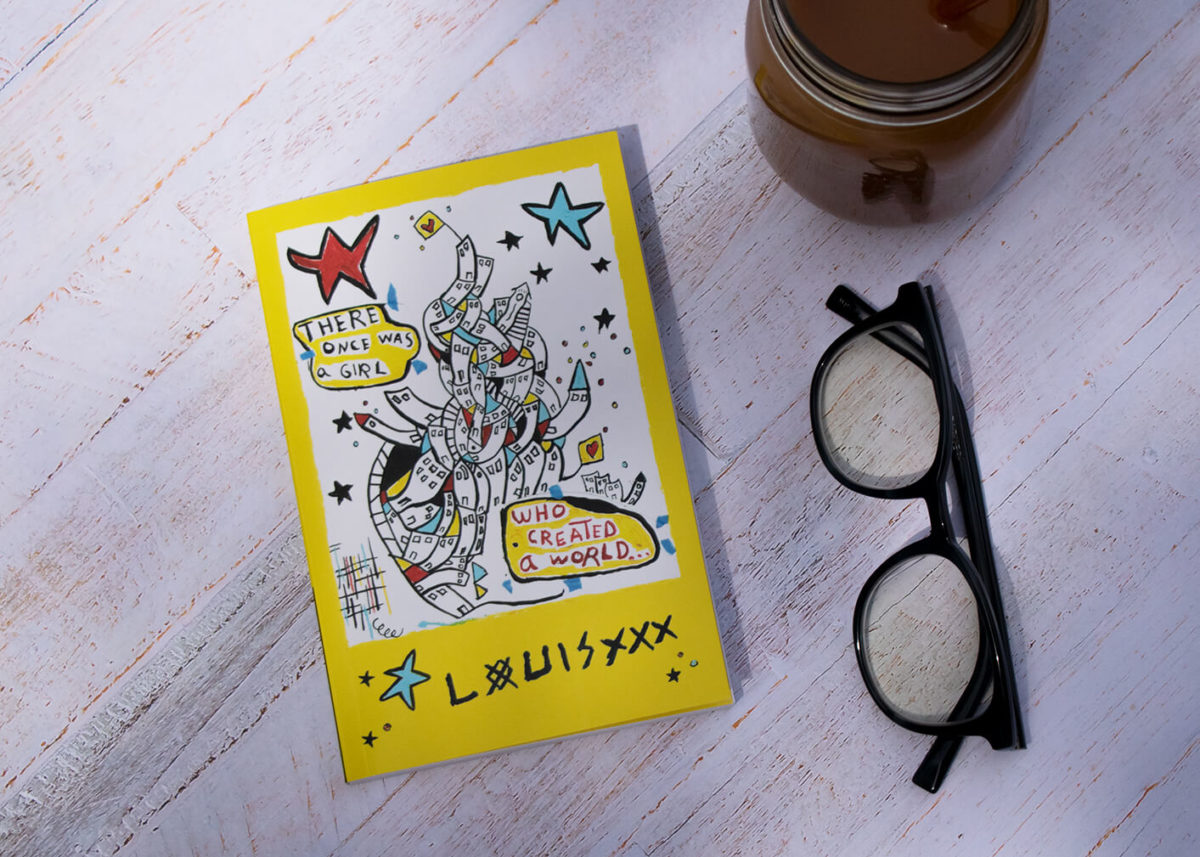Exploring Visual Poetry with Louis Cannizzaro
Poet, artist, and author Louis Cannizzaro takes worldbuilding to the next level with his immersive, colorful, and inspiring work. Cannizzaro has authored five books, exhibited his artwork across the globe, and appeared in magazines such as Rolling Stone, Vanity Fair, and Exhibit A. We sat down with Cannizzaro to talk with him about his latest visual poetry collection, There Once Was a Girl Who Created a World.
Thea Voutiritsas: For those who aren’t familiar, how would you describe the concept of “visual poetry”?
Louis Cannizzaro: Visual poetry is a way of expanding your work, a different way of seeing the words. It’s like putting a tuxedo on a washing machine or a party dress on a toaster… It becomes more versatile in ways you would never imagine. Now you can take your toaster to a formal event. Now you can put your poetry in an art gallery.
TV: Which poets and/or artists have inspired you most?
LC: Raymond Queneau! He was inspired by mathematics. Everything was calculated and predetermined: page numbers, number of chapters, words. Nothing was trivial. I was already writing when I discovered him—and I’m not good at math, but it was nice to find someone so dedicated to detail. I’m inspired by being around my friends… Jaq Dutch, Gregory Siff, Johnny Davis. They are very inspiring artists. I look forward to being around them more soon.
TV: What elements of daily life inspire you?
LC: Nothing can always be something. The insignificant can be inspiring. A misunderstood word or a crack in the sidewalk can drive you to recreate that discovery in a poem or painting.
TV: You’ve published many other books, including Have Faith and Full of Grace. How has the process for There Once Was a Girl Who Created a World been similar or different from your previous works?
LC: The work process was similar—give yourself six weeks to complete the book, then do it in the last six days. I like a continuity of thought in a condensed period of time. The difference between this book and my other books is I was used to doing everything after the books were created—scanning, printing, distribution,importing… it was all me. I didn’t mind it. Everyone should be able to see a project from beginning to end alone. But collaboration will help you grow as well. It’s super nice to have access to Andrews McMeel Publishing and all their magic. Patty, Cat, and Courtney at AMP are very supportive. They have great ideas, and they don’t laugh at mine. Like when I said I wanted the look of the book to be like a candy bar wrapper you find in your couch… super saturated colors but with all the rips, tears, and folds.
TV: Your style is pretty recognizable. When did you first realize that you liked combining visual art and writing? How has your style evolved over time?
LC: When I moved to LA with all my NYC thoughts and experiences, I really didn’t know what to do. LA doesn’t take care of you like New York does. Los Angeles is a blank page… you have to make the first move. I used my Brian Eno/Peter Schmidt Oblique Strategies cards for inspiration. The one that stands out said, “What are you really thinking about just now? Incorporate.” The thought of creating my own work with poetry and painting was a real Eureka! Moment. The other card I remember liking was, “Don’t be afraid of things because they’re easy to do.”
As for evolution, I recently discovered liquid acrylic, which really made a difference in There Once Was A Girl… I was able to draw people with their eyes open. I used to only draw them with their eyes closed with long lashes. The liquid acrylic lets me do a long, fluid line. It sounds like a small thing, but I loved it so much I put open eyes on both inside covers of the book.
TV: There Once Was a Girl has a fairly limited color palette—mostly of reds, blues, yellows, and some pinks. What role does color play in the theme of the book?
LC: I’m very good at working with as few color choices as possible… and thoughts.
TV: What is one thing you want readers to know about the book?
LC: I want the reader to know that I leave room for them. When I get an idea I sculpt most of myself out of it. That leaves room for individual interpretations. I love when someone sees a personal secret in a piece. I really just left room for them. Louisxxx




